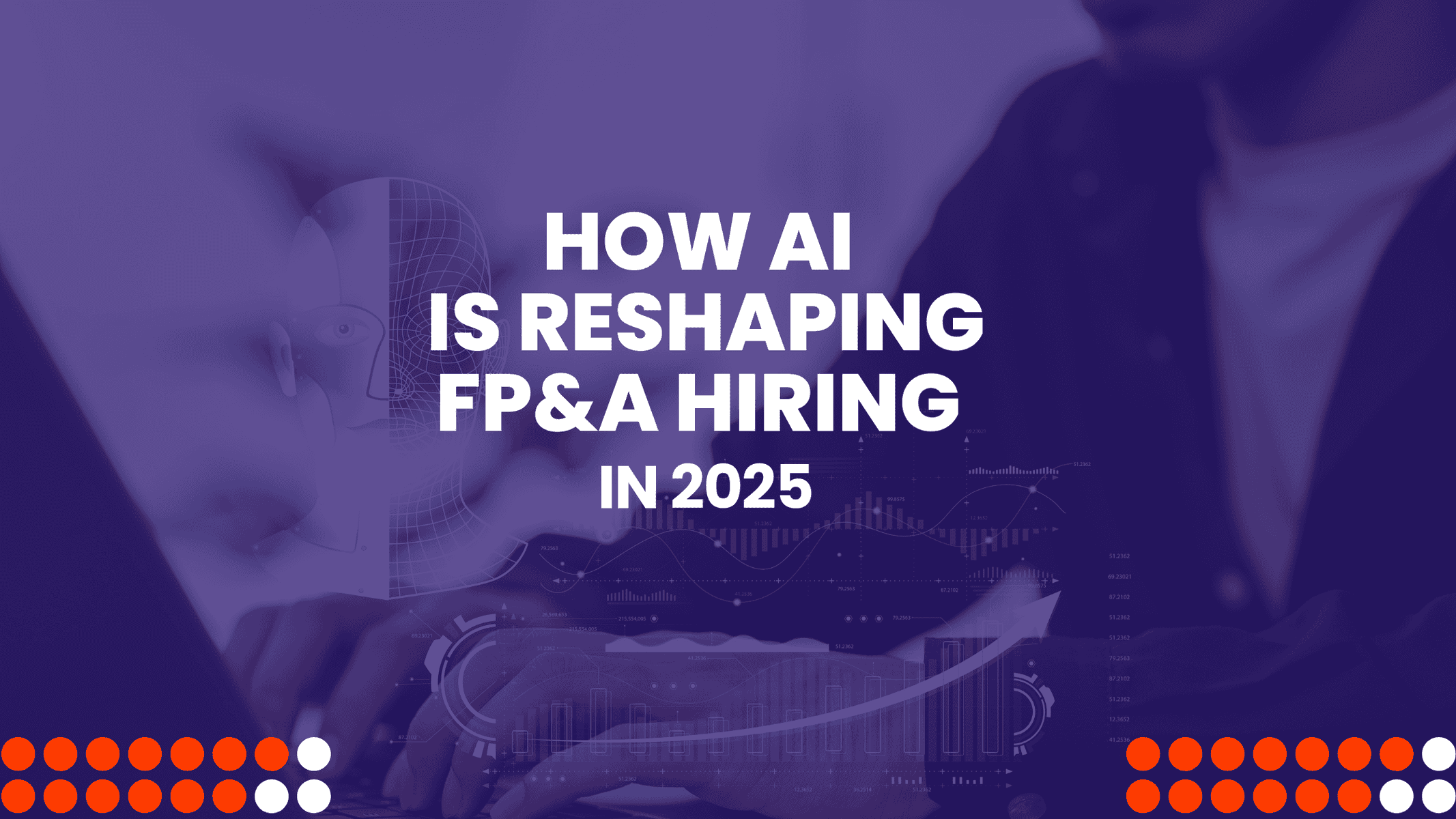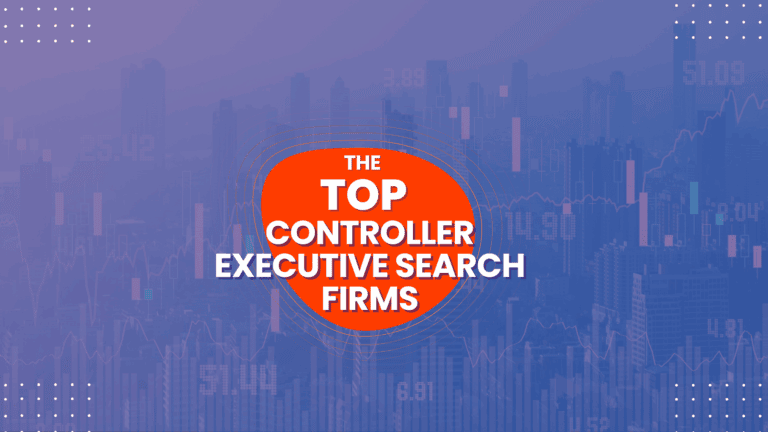From January – September 2025, Talentfoot conducted a comprehensive study analyzing AI adoption patterns and hiring trends across Financial Planning and Analysis (FP&A) teams in North American companies. This study analyzes current AI usage, its impact on hiring needs, the skills required for emerging candidates, and the return on investment (ROI) of securing FP&A leaders with AI competencies.
AI and the New Finance Copilot
According to the FP&A Trends Research Paper 2025, sponsored by EY, forty-seven percent of FP&A teams now use AI in at least one workflow, compared with just six percent in 2024 [1]. For hiring leaders, this evolution is redefining what a strong FP&A profile looks like.
FP&A professionals are becoming copilots to the business, helping leaders interpret data, test scenarios, and make faster, better-informed decisions. Instead of spending days consolidating numbers, teams can now generate live dashboards that update as new information flows in.
Research highlights three core ways AI is already used in FP&A:
- Productivity enhancement: Automating data consolidation, reporting, and reconciliation.
- Insight generation: Mining structured and unstructured data for patterns and early trends.
- Decision support: Powering continuous forecasting and real-time scenario modeling.
Microsoft’s Modern Finance initiative demonstrates this shift. By embedding copilots and predictive models across forecasting and variance analysis, the company reduced manual reconciliation time and improved forecast accuracy by more than 25 percent [2]. Similar results have been reported in other industries, from telecom to healthcare, where FP&A copilots now summarize earnings calls, highlight anomalies, and prepare management-ready commentary.
These tools are not replacing finance teams; they are giving them leverage, freeing capacity for higher-value analysis and more accurate forward-looking projections that directly impact business performance. A recent Boston Consulting Group (BCG) study found that AI can make planning cycles 30% faster and improve forecast accuracy by 20% to 40% [3].
The FP&A Talent Shift: New Roles and Hybrid Skills in 2025
As automation scales, the composition of finance teams is changing just as rapidly. There are five key roles now emerging across high-performing FP&A functions [1].
Role Category | Core Focus | Impact on Hiring |
AI-Native Analyst | Budgeting, variance, and forecasting accuracy | Still essential but increasingly hybrid with automation tools |
Finance Architect | The FP&A Talent Shift: New Roles and Hybrid Skills | High demand; ensures data integration and real-time accuracy |
Predictive Modeler | Builds and interprets predictive models | Fastest-growing FP&A hire since 2024 |
Insight Translator | Translates analytics into executive insight | Growing priority in board-facing roles |
Traditional Analyst | Aligns financial insight with strategy | Emerging as a leadership prerequisite |
Research Insights:
- Talentfoot’s analysis of mid-to-senior FP&A searches reflects the same pattern, with more than half of new mandates now seeking professionals who blend financial fluency with AI literacy.
- This movement toward hybrid talent marks a broader cultural change: the modern FP&A team focuses less on manual control and more on guiding intelligent systems with sound judgment [1].
Role Category | Market Demand | Avg. Salary Premium | Key Skills Required |
AI-Native Analyst | Very High | +18% | AI tool fluency, GenAI prompt use, bias detection, model validation. |
Finance Architect | Extreme | +24% | System integration, data pipeline design, data governance |
Predictive Modeler | High | +15% | Machine learning, statistical forecasting, scenario simulation |
Insight Translator | Moderate | +12% | Data storytelling, executive communication |
Traditional Analyst | Declining | Baseline | Excel modeling, variance analysis |
Research Insights:
- Finance Architect roles show the fastest expansion of any FP&A specialty
- Candidates with AI platform certifications (Microsoft 365 Copilot, Power BI, GPT Enterprise) command salary premiums of 15-24%
- Traditional analyst roles without AI integration show 31% decline in new job postings compared to 2024
Emerging Skill Profiles: The AI-Powered FP&A Professional
The next generation of FP&A professionals combines technology fluency with business judgment.
Technical fluency | Human judgement and influence |
Ability to work with AI copilots and visualization platforms such as Power BI, ChatGPT Enterprise, or Microsoft 365 Copilot for Finance | Translating AI-generated forecasts into actionable commercial recommendations |
Predictive forecasting and driver-based modeling experience | Communicating uncertainty clearly to non-technical stakeholders |
Ability to validate AI outputs for accuracy and bias | Leading cross-functional decisions with confidence and clarity |
The five FP&A skills showing the fastest growth since 2024 [4]
AI-assisted forecasting and planning | Data visualization & dashboard storytelling | Copilot or GenAI platform literacy | Scenario modeling & risk simulation | Change management & finance-tech integration |
Research Insights:
- FP&A talent who can interpret AI results, not just run them, are quickly becoming the most competitive hires in the market.
Top Skills Driving FP&A Hiring Decisions
Analysis of job posting requirements reveals five critical competencies that separate high-demand candidates from traditional FP&A professionals.
The Most Valuable FP&A Skills Matrix — 2025
Skill | Appeard in Job Requirements | YoY Trend |
AI Model Validation | 67% | Up (+10%) |
Real-Time Dashboard Creation | 73% | Stagnant (~) |
Scenario Modeling with ML | 54% | Up (+13%) |
Finance Process Automation | 61% | Up (+21%) |
Executive Data Storytelling | 49% | Stagnant (~) |
Hiring Pattern Analysis:
- AI model validation is growing rapidly but low candidate availability is creating intense competition for qualified professionals
- Real-time dashboard creation appears in nearly three-quarters of job postings, indicating universal demand for visualization skills
- Executive data storytelling, while less technically demanding, remains crucial for senior FP&A executives
What This Means for Hiring Leaders: The Race for AI-Ready Talent
AI is transforming not only finance workflows but also the competencies organizations look for in senior finance talent. Talentfoot’s review of recent placements shows three traits that consistently define top-performing FP&A leaders.
Key Competency | Evidence in Practice | Business Impact |
AI-Augmented Forecasting | Uses machine learning and copilots to test assumptions dynamically | +25% forecast accuracy vs. traditional models [4] |
Cross-Functional Translation | Bridges finance, data science, and IT | Faster cycle times and more cohesive decisions |
Storytelling with Data | Converts analytics into board-ready insights | Increases CFO trust and strategic visibility |
Research Insights:
- Recruiters are adapting their evaluations. Instead of testing only for modeling speed, they now assess how candidates use AI tools, validate outputs, and communicate results.
- FP&A directors are increasingly judged on how they supervise copilots and maintain ethical oversight, not just on their technical modeling ability.
Leading companies are also investing in internal reskilling programs to close capability gaps. Some have introduced AI “bootcamps” for finance teams, pairing analysts with data scientists to practice prompt engineering and output validation. Others are embedding finance innovation that leads to champion experimentation, mirroring Microsoft’s “innovation showcase” approach.
Compensation data supports the trend. A 2025 PwC report found that workers with AI skills command a 56% wage premium compared to their peers in the same roles [5]. Talentfoot’s 2025 search portfolio shows that FP&A roles requiring AI integration or automation leadership earn 10 to 18 percent higher base salaries than comparable positions without those skills. In parallel, the average time-to-hire for senior FP&A roles has lengthened by nearly 20 percent due to the limited supply of hybrid candidates.
For employers, this means the race for AI-ready finance leaders is already underway. Those who wait to define these roles risk being left behind as early adopters build fully modernized FP&A teams. In short, AI fluency has become a leadership premium.
Conclusion
AI copilots are transforming FP&A from a backward-looking reporting function into a forward-looking strategic partner. The finance leaders most in demand today are those who can combine automation with judgment, turning machine intelligence into business insight.
Organizations that invest in hybrid, AI-literate finance talent now will strengthen forecasting accuracy, scenario planning, and strategic agility for years to come. A recent study by Lightcast revealed that job postings mentioning at least one AI skill advertised salaries 28% higher on average [6].
To learn how Talentfoot connects companies with next-generation financial and analytics leaders, contact our executive search team today.
Sources
[1] “How AI Is Transforming FP&A,” FP&A Trends Research Paper 2025, sponsored by EY.
[2] “Microsoft Modern Finance Case Study,” EY/FP&A Trends Group, 2025.
[3] “FP&A Trends Survey 2024 and EY Benchmark Data,” EY.
[4] Boston Consulting Group. “The Power of AI in Financial Planning and Forecasting.” Sept. 27, 2024.
[5] PwC. “The Fearless Future: 2025 Global AI Jobs Barometer.” June 3, 2025.
[6] Lightcast, as reported by CNBC. “AI Skills Are in High Demand — and Employers Are Willing to Pay a Premium for Them.” Sept. 4, 2025.




